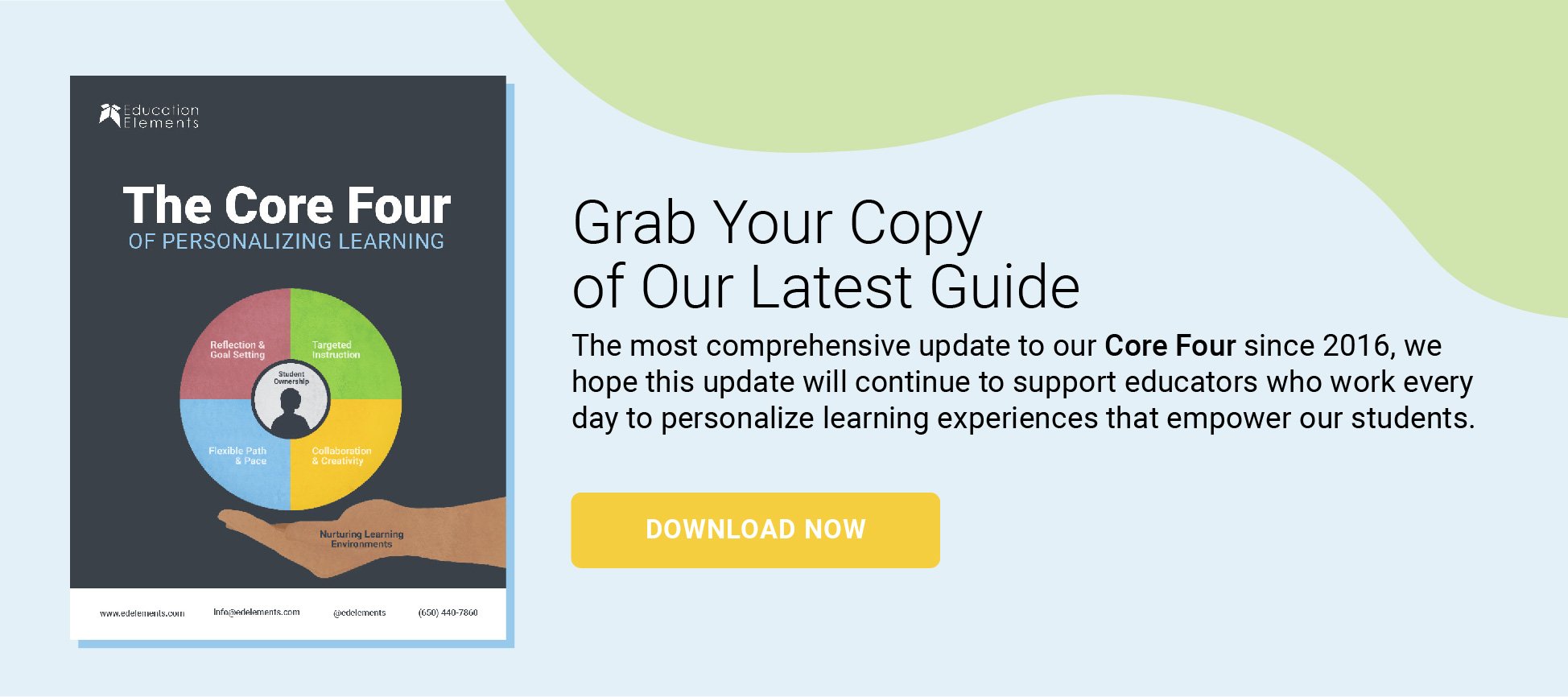
Leading with Equity: How to Take the First Steps
Equity | District Leadership | School Leadership
I believe that ALL students, especially Black and Brown students, deserve an academically rigorous education that affords them opportunities and experiences that will prepare them to lead a successful life. That said, inequity and disparity exist within our educational system that prevents that from occurring, which is why, among other reasons, it is critical to lead with equity.
Like many, I am a leader constantly learning and growing in how I lead with equity. In fact, I do not believe equity-based leadership is something one truly masters, afterwhich one checks a box: completed. As our society is ever evolving, racism shapeshifts to keep up with the times. So, we become more conscientious, reflective, and intentional with our practices. And to that end, I am sharing how I began my journey to lead with equity with the hope that it will serve as a starting point for someone else.
Some shared definitions and agreements to serve as a foundation for this conversation.
- Racism is alive and present. Its pervasiveness has seeped into all American institutions, including the educational system. Racism is the seed that has sprouted the branches of oppression, privilege, prejudice, bias, and discrimation. I use Dr. Beverly Tatum’s definition of racism as a system of advantage and/or disadvantage based on race.
- We ALL have biases (implicit and explicit). Whether consciously or unconsciously, our biases influence and shape how we make sense of the world and interact with individuals different from ourselves.
- Many of us have benefited from privilege in some aspects of our lives. It’s nothing to be ashamed of, but if we are to lead with equity, then we must acknowledge this as well.
Start with Introspection - Who are you?
Leading for equity requires you to critically interrogate all aspects of your identity. Who are you? What are your beliefs? And why do you believe that? Who are the people in your life? How have they influenced you? How has your childhood shaped your adulthood? What is your culture? What are your traditions? These are a few, initial questions to reflect upon as you begin to unpack your identity.
By understanding your identity and experiences, you increase your self-awareness. You gain greater insight and perspective of how you view others and the outside world. It also allows you to identify the power, privilege, and biases you hold. This may be difficult as you may feel guilt, shame, anger, pity, or discomfort about some aspect of your identity. First, those feelings are valid. Secondly, move past it. Our students cannot wait for you. You also cannot disrupt systems of oppression if you are hindered by those emotions.
Some activities that can help you know yourself include journaling and reading. Below are a list of texts:
- How Good People Fight Bias: The Person You Mean to Be by Dolly Chugh
- How to Be an Antiracist by Ibram X. Kendi
- So You Want to Talk About Race by Ijeoma Oluo
- Me and White Supremacy by Layla F. Saad
- Why Do All the Black Kids Sit Together in the Cafeteria by Dr. Beverly Tatum
- Courageous Conversations About Race: A Field Guide for Achieving Equity in Schools by Curtis Linton
I would also recommend you take any of the Implicit Bias assessment by Harvard University. This tool will help you to uncover biases you hold on various aspects of your identity - race, gender, religion, disability, etc. It’s a helpful starting point on your journey.
I want to reiterate that the process of introspection is never complete. We are constantly exploring our identities, unpacking our life experiences, and reflecting upon decisions. Society is also always shifting, and we should analyze its impact upon us.
Extrospection - Who is a part of your school community?
As you begin to unpeel your identity, your curiosity should extend to your community. Who are the people that live within your school community? This question can be answered in two ways: what is the composition of the physical community that serves your school, and what is the composition of your student body. You cannot be an equitable school leader without knowing and understanding the people and community you serve.
Here are some initial questions you can start to answer when learning more about the community you serve:
- What is the history of your community?
- What is located within your community (grocery stores, jobs, hospitals, neighborhoods/houses/apartment complexes, parks/playgrounds, etc.)?
- What are the “go-to” spots (churches, community centers, restaurants, etc.)?
- Who are the community leaders? Community leaders can be those with formal power such as representatives and mayors and also, informal leaders (gatekeepers), those grandmothers or church pastors that are ingrained within the fabric of the community.
Here are some initial questions you can start to answer when learning more about the families within your school community:
- Who are the people that attend your school? Are there siblings?
- Why did families select your school as a place to educate their children?
- What are their hopes and dreams for their child?
- What are the different histories, cultures, and traditions of your families?
One lesson I learned on my leadership journey is to not assume that -- because I share one aspect of my identity (i.e. my race) with students and their families -- my story (my struggles, my beliefs, my aspirations, etc) is the same. I failed to realize that there are some many moments within our lives that define us and shape our story. And while one part of my identity allows me to forge connections, I still needed to put in the energy to get to know my students and families.
Having this knowledge shifts your approach to this work and influences how you lead. It should shape your hiring strategy, instructional philosophy, parent engagement strategy, cultural/classroom management beliefs, and much more. If you know - and I mean truly know - the people within your community, you begin to see how certain policies and procedures are unjust for students. Which leads me to my next section.
Find a Starting Place
As you begin to analyze the policies, procedures, and school structures that are harmful to students and families, you may become overwhelmed with the sheer number of inequitable practices. Don’t let this discourage you! There are many tools such as equity audits, toolkits, walkthroughs, and rubrics, you can use to help you determine an area of focus.
After you have selected an area of focus, develop a strategic plan. This should be done by involving ALL stakeholders: teachers, students, families, community leaders, and members. Start a committee, conduct focus groups, administer surveys, collect research, or connect with leaders from other districts to inform your planning. Get feedback along the way to ensure it is meeting the needs of your school community and not remixing oppression into another form.
This process allows you to establish (or re-establish) trust with all stakeholders. Instead of doing something to or for your families and community, you are providing them with a voice and allowing them to be a decision maker within your school. There are so many benefits to this. For example, your parental engagement increases, as now parents have an avenue to make improvements within the school. Another impact is improved parent satisfaction with their involvement throughout this process. This also demonstrates to families that their thoughts, opinions, and experiences are valued as it was used to create or recreate a school policy or procedure.
Let’s Talk About Race
Within your school faculty, it is impactful to have intentional conversations about race and implicit biases. As a first step, consider surveying your staff anonymously to determine level of comfort and potential topics to discuss. Again, these conversations can be uncomfortable and difficult, and some staff may not see their relevance. It is important as a leader to share your why and how this connects to your school’s mission and vision for student success. I would consider drafting shared norms, specifically for conversations about race and implicit biases that govern how you engage with one another. Some effective norms I’ve seen used have been “ask questions that seek to understand;” “own impact of actions;” and “honor people’s stories and experiences.”
Depending on your level of expertise and your school’s budget, I would consider contracting with a skilled facilitator to initiate conversations. Their insight, resources, and guiding questions can inspire staff and make connections to their work with students. Another idea is to launch a monthly book club. Using the topics identified in the survey, select a text that helps teachers gain insight and further their understanding. You can get creative in how you want to debrief what teachers learned from the text. In my own practice, we used our weekly Professional Development time to share our takeaways. I have also seen this done in grade level/content meetings, shared planning, and at lunch. Creating affinity groups is also another option to have open discussions about race and implicit bias. This allows staff to process their experiences with individuals that share similar aspects of their identity.
Leading with equity is not a check-list of items. Leading with equity requires you to critically examine your identity, understand the community we serve, analyze policies and procedures, give families and the community a voice, and engage in difficult conversations about races. You truly transform how you lead once you begin to lead with equity.
More Equity reading
Blog: Grading for Equity: One School’s Approach to Increasing Student Ownership and Success
Blog: 9 Things That Matter When Hiring Black Teachers
Blog: "It keeps us all safe" and Other Lies Used to Spirit Murder Black and Brown Children



